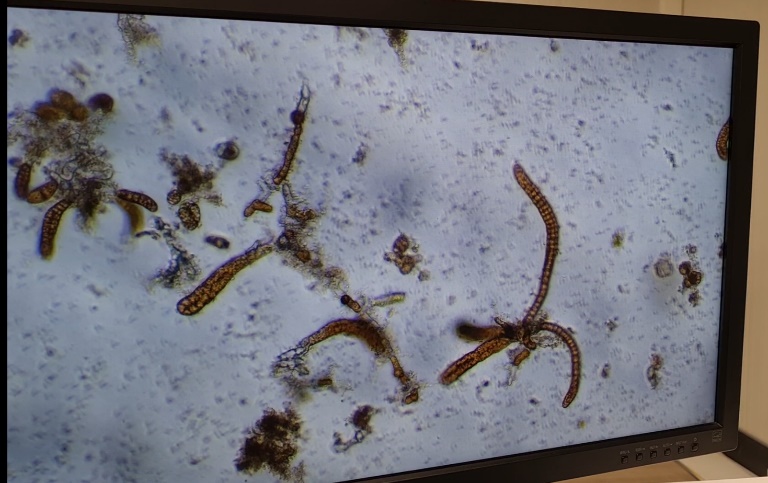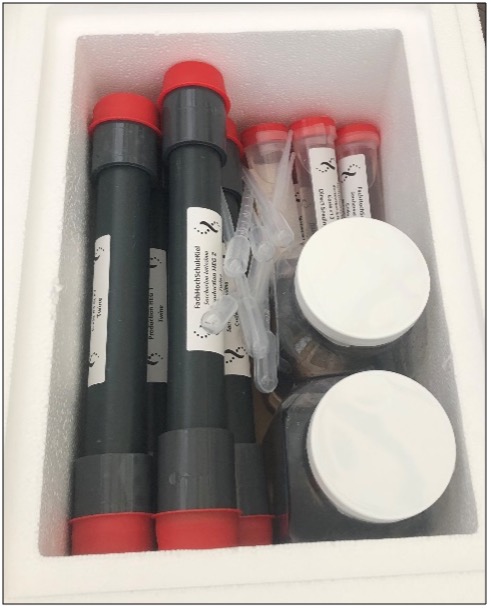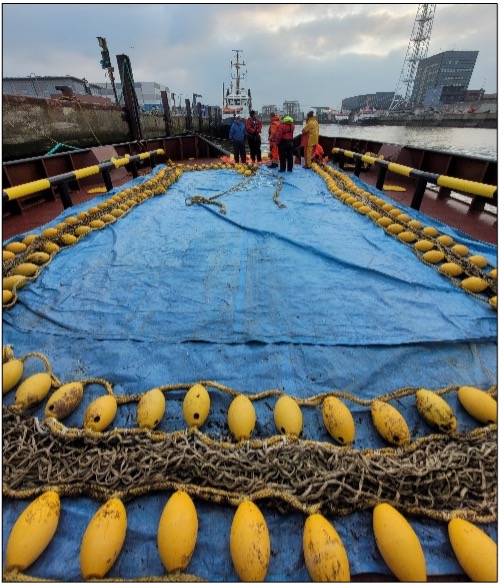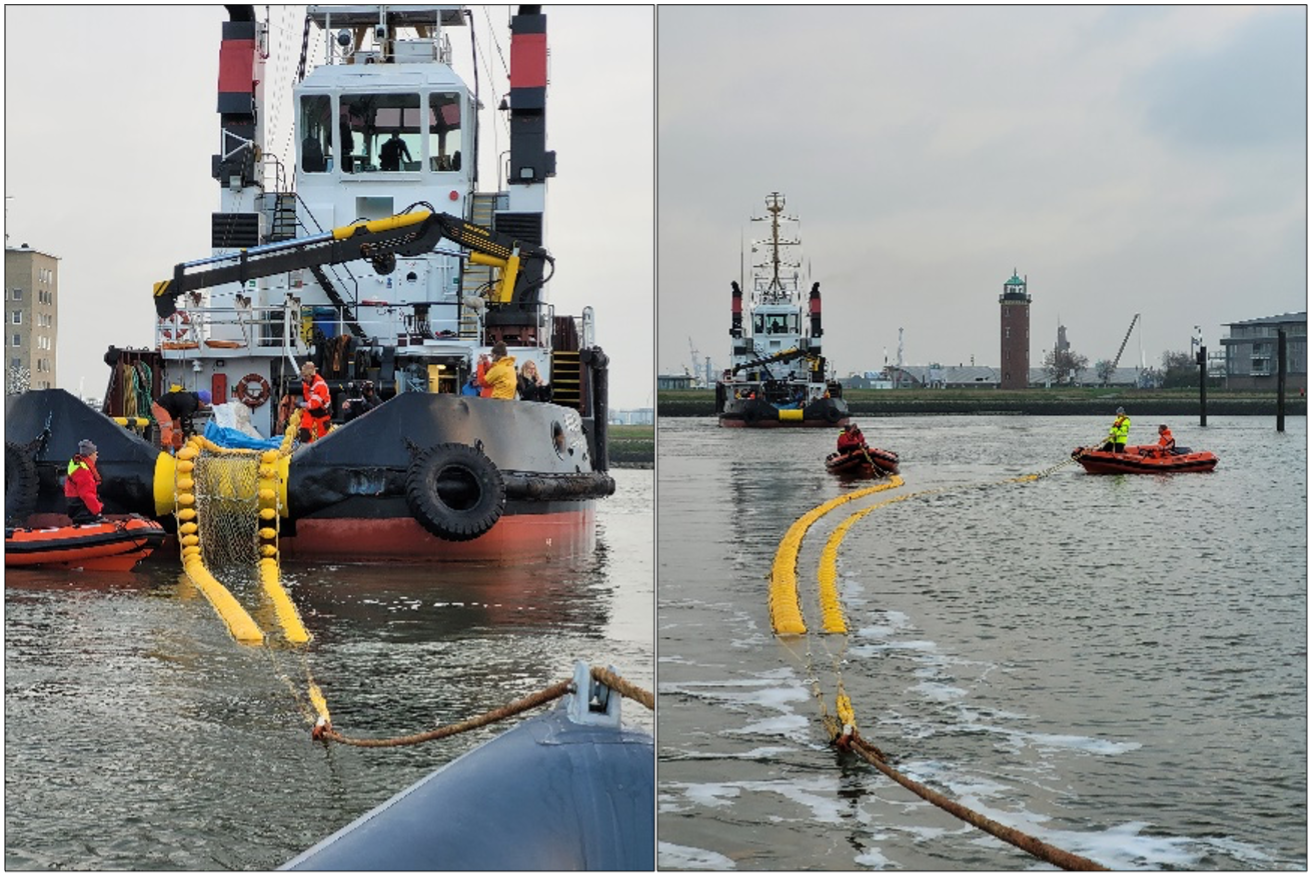Successful Seaweed seeding for the German Pilot
As the last month of the year started, the German pilot used made their last big effort for 2022. On the 1st December 2022 the German Pilot team met in Cuxhaven to seed the seaweed net to be deployed at the German offshore location. The net measures 30m width and 3m depth and has a total of 1000m grow out rope. Like all offshore actions, it is a logistical challenge to have everything in place at the right time with good weather.
The team of the Dutch algae hatchery Hortimare cultivated the seedlings of sugar kelp (Saccharina Latissima) for direct and twine seeding. They used a strain coming from Helgoland, to ensure the cultivation of a local strain.
 |
| Figure 1 Last inspection of gametophytes (for direct seeding) under a microscope at Hortimare (NL) shortly before delivery to Cuxhaven (GER) |
“The first hurdle to consider when planning the preparation of the algae net is the temperature” says Eva Strothotte, head of the German Pilot. Indeed, the safe deployment of the algae can only occur when the water temperature is below 15°C. However, at the time of cultivating in the hatchery, no reliable information can be given about the weather at the location where the algae are to be deployed (sea state, wind, air temperature etc.).
Once the cultivation in the hatchery is complete, there is only a small window of one week in which the seedlings of sugar kelp must be transferred onto the net and into the North Sea, otherwise they will grow too large and could be harmed or destroyed during the seeding process.
 |
|
Figure 2 Packed seedlings ready for safe transport |
Therefore, the German Pilot team decided to deploy the 30m net into the marina of Cuxhaven right after seeding to give the seedlings the possibility to attach safely to the net before being exposed to offshore conditions. This also gave the chance to store the net for a potential upcoming weather window on short notice. The seeding was performed on the working deck of the tug boat WULF9 (Figure 3).
 |
| Figure 3 Fully seeded net on the deck of the WULF9 |
Once the seeding was completed the huge offshore vessel sailed from the operational harbour to the entrance of the marina where three inflatable boats took the net from the deck and tugged it slowly and smoothly into the marina. At the end of the marina the net was connected to a floating dock to ensure the constant submersion of the net with the changing tides. Moreover, the net was spread out horizontally to ensure that the young algae have adequate light conditions for growth.
 |
|
Figure 4 Deploying the seaweed net into the marina of Cuxhaven (left) and tugging it with inflatable boats to its final position (right). |
